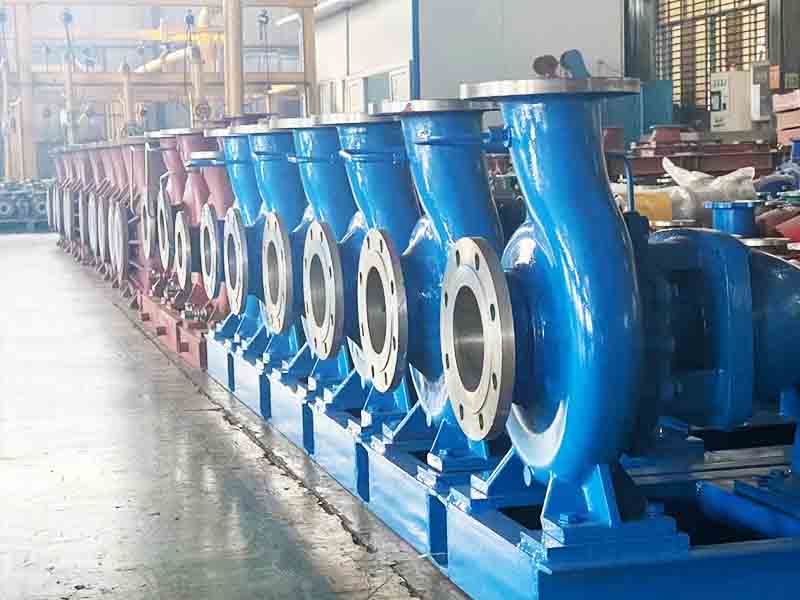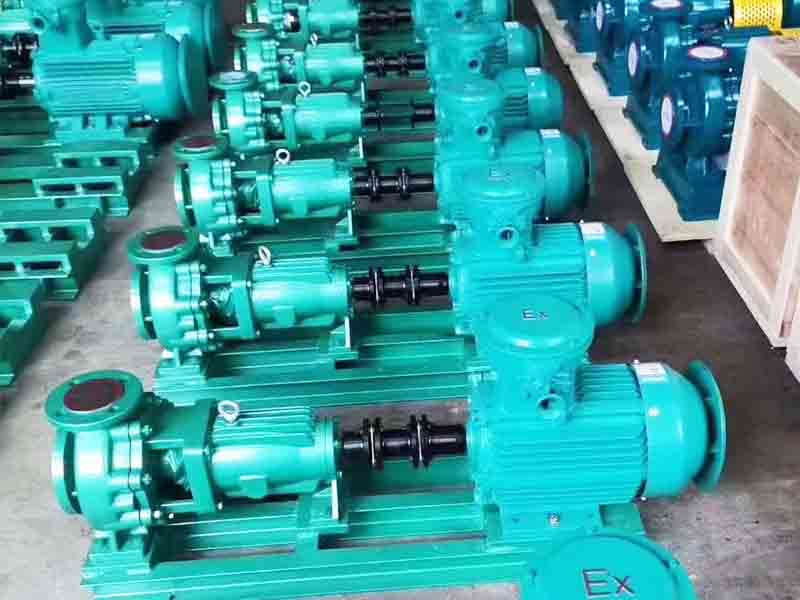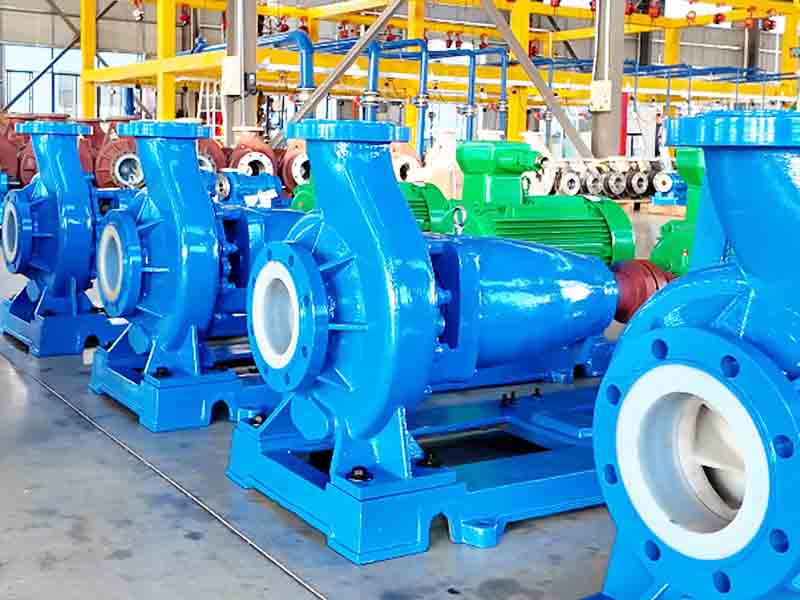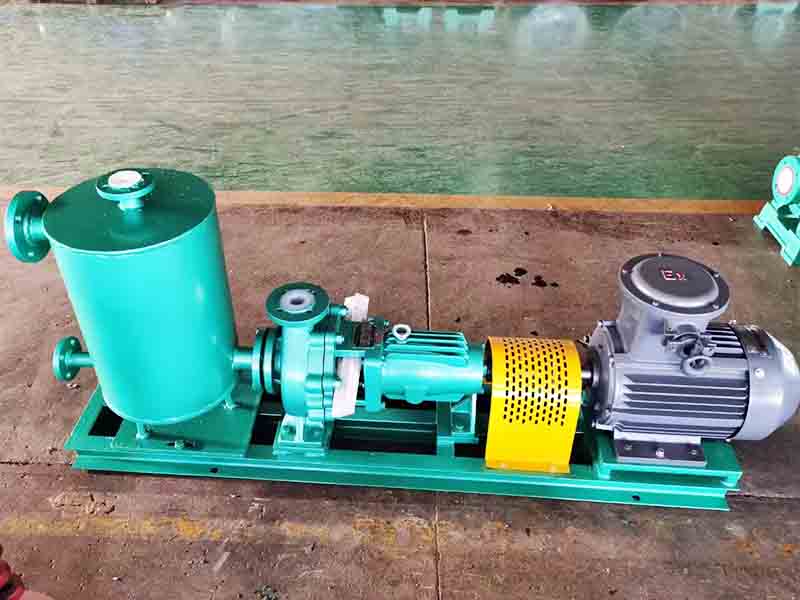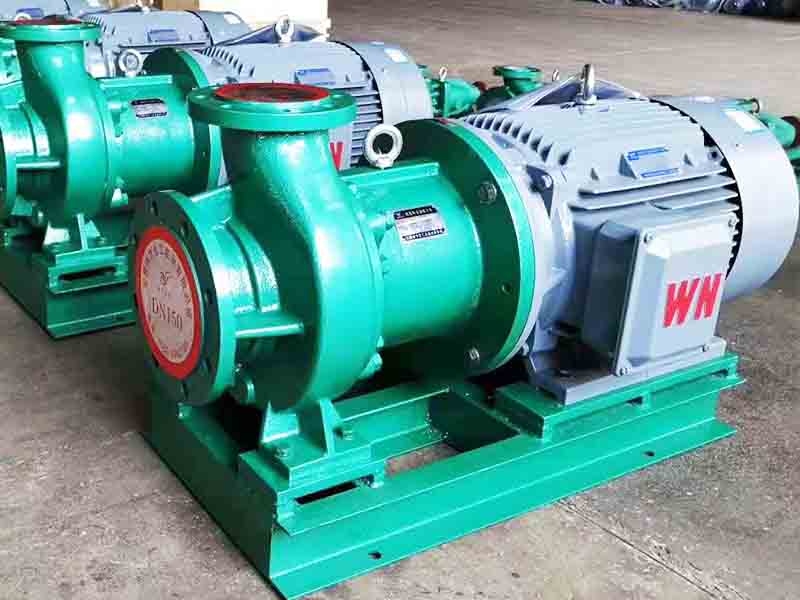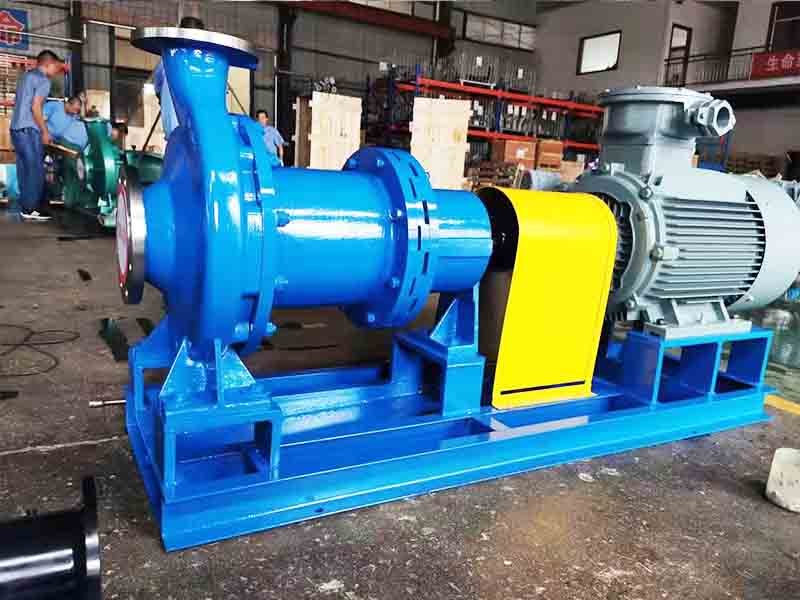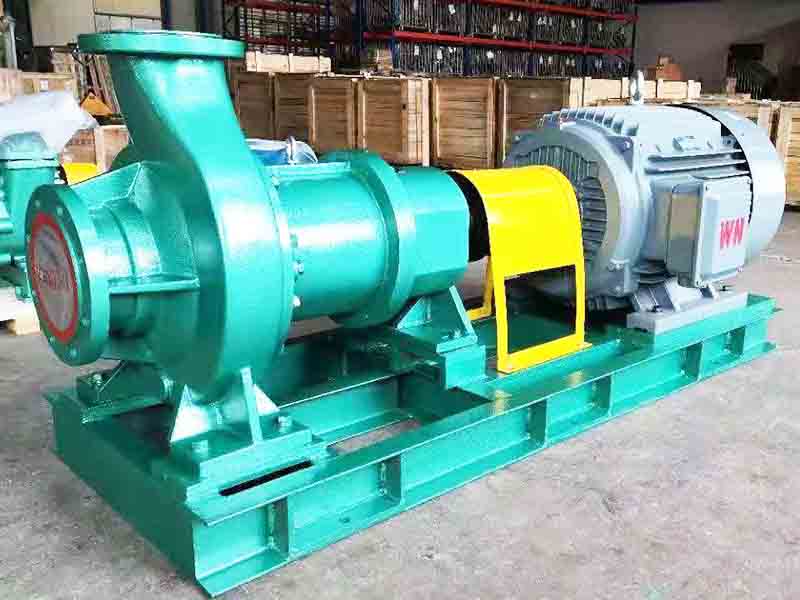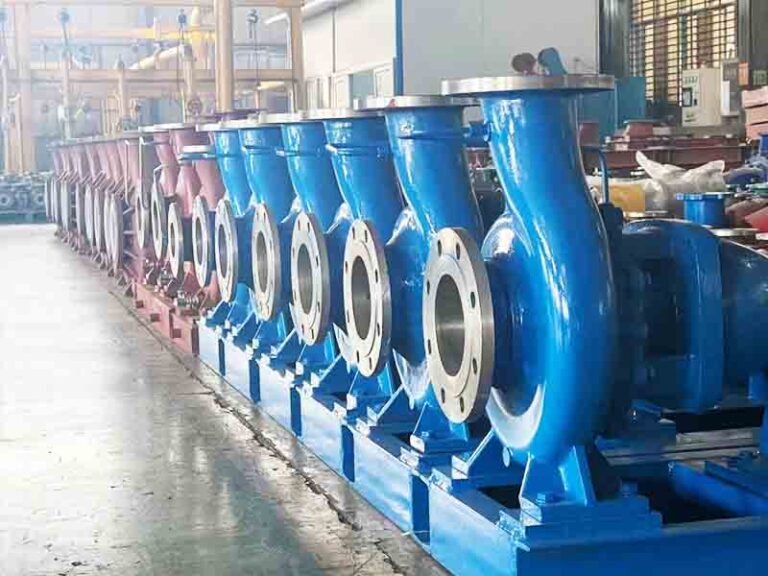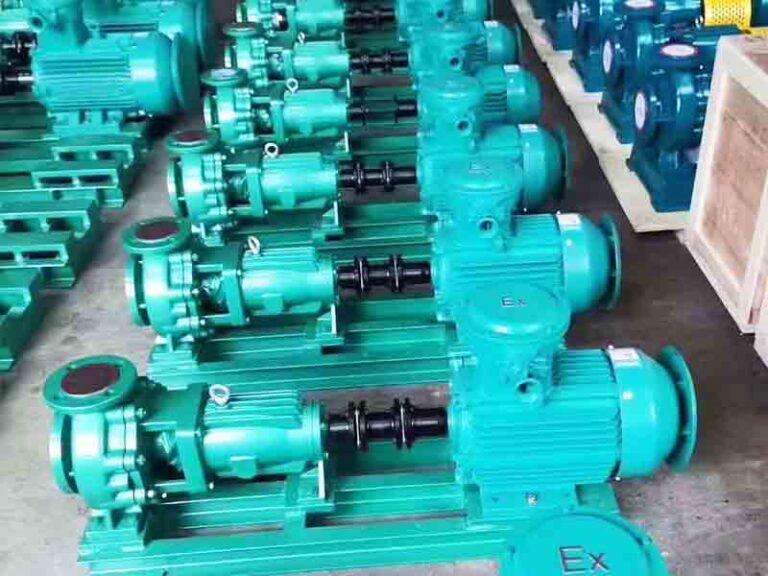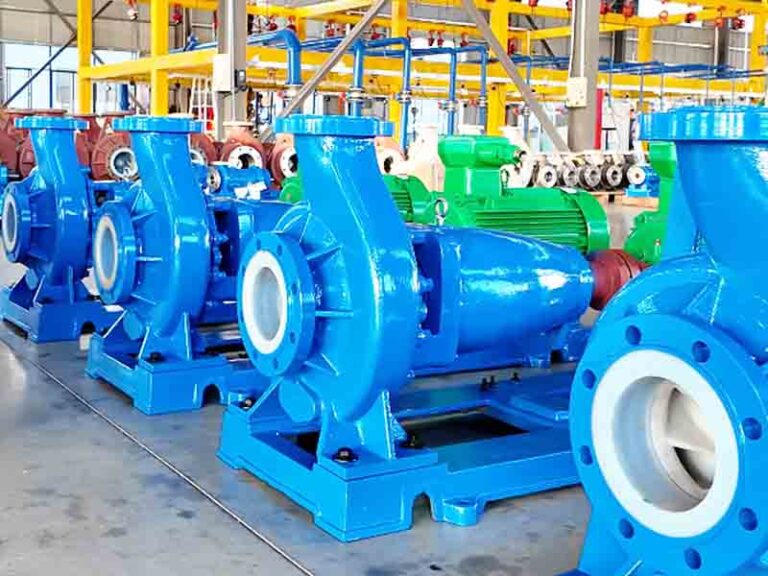In the pump industry, centrifugal pumps and AC induction motors are two extremely simple yet highly efficient devices. Centrifugal pumps convert mechanical energy into hydraulic energy (flow, speed and pressure), while AC motors convert electrical energy into mechanical energy. The efficiency of centrifugal pumps has a direct impact on the cost and effectiveness of industrial production, so what exactly are the factors that affect the efficiency of centrifugal chemical pumps? This article will delve into this key issue and introduce effective methods to enhance and maintain efficiency.
Centrifugal pump efficiency of the basic concepts
Efficiency definition
The overall efficiency of a centrifugal magnetic pump is the ratio of water (output) power to shaft (input) power, which is calculated as Ef = PW / PS. where Ef represents efficiency, Pw is water power, Ps is shaft power . In the U.S., Ps is the brake horsepower (BHP) supplied to the pump shaft, and Pw is calculated as Pw = (Q x H) / 3960, where Q is the flow rate in gallons per minute (GPM), H is the head in feet, and the constant 3960 is used to convert the product of the flow rate and head in GPM – feet to brake horsepower. Using these formulas, we can accurately calculate the efficiency of a chemical pump under specific operating conditions.
Efficiency Ranges
The efficiency of centrifugal pumps varies somewhat from one size to another. Medium and large centrifugal electric pumps typically have efficiencies in the 75% – 93% range, and even small centrifugal pumps typically achieve efficiencies in the 50% – 70% range. In contrast, large AC motors can approach 97% efficiency, and motors of ten horsepower and larger are designed to exceed 90% efficiency.
Efficiency Components
The total efficiency of a standard centrifugal pump is calculated by multiplying the mechanical efficiency, volumetric efficiency and hydraulic efficiency. Mechanical efficiency covers the loss of mechanical seal, stuffing box and bearing frame; volumetric efficiency includes the loss caused by the balance hole and wear ring; hydraulic efficiency involves the loss inside the impeller and worm gear as well as the loss caused by liquid friction. Among them, hydraulic efficiency is the biggest factor in determining the overall efficiency of the mag-drive pump.
Key factors affecting the efficiency of centrifugal pumps
Impeller geometry
The design of the impeller directly affects the fluid flow state and energy conversion efficiency. Parameters such as the geometry of the impeller, the number of vanes, and the curvature of the vanes all have an impact on the conversion efficiency of the kinetic energy of the fluid. For example, a reasonable blade curvature can guide the fluid more smoothly, reduce energy loss and improve efficiency.
Pump casing design
Pump casing design will also affect the fluid flow and non-leakage magnetic pump efficiency. Reasonable pump casing design can effectively reduce the turbulence of the fluid loss and energy loss, thus improving the efficiency of the pump. If the pump casing design is not reasonable, it may lead to unnecessary fluid disturbance in the self-priming centrifugal pump, reducing efficiency.
Flow rate
Flow rate is one of the important parameters affecting the efficiency of centrifugal pumps. Under different flow conditions, the efficiency of the pump will change. When the flow rate is too high or too low, the pump may not be in optimal working condition, resulting in a decrease in efficiency.
Lift
The head refers to the height of pressure that the magnetic drive pump is able to provide, and it also has an impact on the efficiency of the pump. In general, as the head increases, the efficiency of the pump may decrease. This is because a higher head requires the pump to expend more energy to overcome resistance, resulting in a decrease in efficiency.
Speed
The speed of a pump has a significant effect on its efficiency. The right speed keeps the pump in optimum operating conditions and improves efficiency. A speed that is too high or too low can result in poor pump performance and reduced efficiency.
Wear and tear
Wear and tear of pump components can reduce pump efficiency. Wear on the impeller and pump casing surfaces increases friction losses, resulting in a decrease in standard centrifugal pump efficiency. As wear increases, pump performance deteriorates and energy consumption increases.
Material quality
The material quality of pump components directly affects engine centrifugal pump performance and durability. High-quality materials can reduce wear and loss and increase pump efficiency and service life. Using poor quality materials may result in premature pump failure and reduced efficiency.
Effective ways to improve the efficiency of centrifugal pumps
Regular maintenance and inspection
It is vital to regularly carry out maintenance work such as cleaning, lubrication and fastening of the centrifugal pump. At the same time, it is necessary to regularly check the wear and tear of the pump’s impeller, bearings, seals and other parts, and replace the damaged parts in time, which can effectively reduce the friction loss and improve the efficiency of the efficient centrifugal pump.
Select the appropriate pump type and size
According to the specific process requirements, fluid characteristics and system characteristics, select the appropriate centrifugal pump type and size. Appropriate pump type and size can better meet the process requirements, improve the efficiency and operational stability of the magnetic chemical pump, to avoid inefficiency caused by improper selection.
Operate near the point of optimum efficiency
Ensuring that centrifugal pumps operate near their best efficiency point (BEP) avoids overloading and inefficient operation. When a acid-resistant chemical pump is operated at the BEP, its hydrodynamic unbalanced load is minimized. If the pump is operated away from the BEP, it will result in an increase in hydrodynamic unbalanced loads, which in turn will affect the performance, reliability and efficiency of the pump. Therefore, the alkali centrifugal pump should be designed and controlled to operate as stably as possible near the point of optimum efficiency.
The importance of maintaining pump efficiency
Saving operating costs
Improve the efficiency of the pump can help save the pump operating costs, including electricity or fuel costs. Efficient pumps get the job done with less energy, which reduces your organization’s energy bill.
Reduced equipment breakdowns
Efficient pumps are less likely to break down frequently. When a pump is inefficient, some components such as couplings, motors, shafts and impellers are more likely to break down. The cost of replacing and repairing these components is high, so keeping pumps running efficiently reduces equipment breakdowns, lowers maintenance costs, and improves system reliability and stability.
Maintenance and optimization of centrifugal pump efficiency
Routine maintenance
Routine maintenance is the basis for ensuring the efficient operation of centrifugal pumps. Maintenance tasks include regular inspection and cleaning to prevent clogging; lubricating moving parts such as bearings to reduce friction and wear; checking seals to prevent leakage; and ensuring proper alignment of corrosion-resistant magnetic pump components to reduce vibration that can cause damage. Establishing a routine maintenance program can identify potential problems in time to avoid serious failures and improve pump reliability and overall efficiency.
Performance Monitoring
Ensure that the pump is functioning at its optimum by monitoring its operation. Key performance indicators such as flow rate, pressure and power consumption should be evaluated regularly, and this data can help identify efficiency problems and make timely adjustments. Utilizing technology such as ultrasonic flow meters can provide accurate readings and early detection of anomalies. Digital monitoring systems enable automated data collection, making it easy to observe trends over time, consistently maintain pump efficiency, and reduce downtime and maintenance costs.
Improvement Strategies
Condition-based maintenance is an effective improvement strategy that optimizes maintenance intervals based on real-time data, rather than on a fixed schedule, to dramatically reduce the probability of breakdowns. Adjusting pump speeds with variable frequency drives (VFDs) can optimize energy use based on actual load demand. In addition, upgrading older components to more efficient ones often results in significant energy savings. Training personnel in efficient pump operation also plays an important role in optimizing pump performance and extending service life.
Conclusion
The efficiency of centrifugal pumps is affected by a variety of factors such as pump design, operating conditions and pump condition. Impeller geometry, pump casing design, flow rate, head, speed, wear and tear, and material quality all play a role in pump efficiency. The efficiency of centrifugal pumps can be effectively improved through regular maintenance, selection of the right pump type and size, and operation near the optimum efficiency point.
At the same time, maintaining pump efficiency is important for saving operating costs and reducing equipment failures. The efficiency and service life of centrifugal pumps can be optimized through routine maintenance, performance monitoring and implementation of improvement strategies. In industrial production, paying attention to the management of centrifugal pump efficiency and rationally applying these methods can bring significant economic benefits and stable production security for enterprises.


